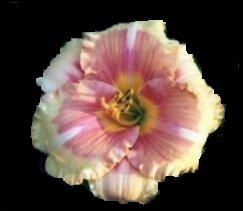Black's Daylily Patch
Silver Springs, Florida 34488
Phone : (352) 236-4422

The following guidelines for daylily culture are presented for information
only. These are some of the guidelines we use and that have provided
us with good results. All recommendations may not be appropriate for
your garden. For further information, Please refer to the American
Hemerocallis Society Web Page. Planting times for daylilies vary depending on your locale. In the
northern regions of the country, spring planting (after the last frost)
is generally preferred. Planting later in the year can be accomplished
as long as you ensure the plants have a chance to get established (
6+ weeks) prior to the first frost. Preventative measures such as mulching
will help. In the deep south, you can plant just about anytime but you
should avoid the hot summer months (July,August and perhaps early September
depending on location) when you have high temperatures and humidity.
The rule of thumb for daylilies is to plant them where they can receive
up to 6 hours of sun per day. This can vary a bit depending on your
locale. Some colors of daylilies (particularly the darker colors ) prefer
some afternoon shade. Pine trees are pretty good neighbors for daylilies
since they provide filtered shade and do not aggressively complete for
plant nutrients. Most hardwood trees and shrubs have shallow feeder
root systems and will compete with daylilies for food and moisture.
Daylilies will grow in most any cultivated garden soil. Performance
of the plants will be improved if you amend your soil with organic materials
such as leaves, composted grass clippings, well rotted manure, etc.
This is particularly true for heavy clay and light sandy soils. Be sure
your plants will placed in a location that has adequate drainage. When you receive your daylilies via mail, it is best to soak the roots
in water for about an hour before planting. Do not over-do the soaking!
Just prior to planting, inspect the crown and root system for damage.
If fresh cuts are evident to large roots or the crown of the plant,
apply a light dusting of a root stimulant/fungicide such as Rootone
F. It is recommended that new daylilies be divided only if the plants
can be seperated without significant crown damage. Forcing a division
creates a crown injury and cause your plants to suffer undue stress
as well as increasing the chances for problems with soil borne pathogens. Daylilies should be spaced at about 18" centers. To plant, dig
a hole larger than the diameter of the plants root system. Form a conical
mound in the center of the hole. Place the plant in the hole and spread
the roots around the mound you formed. Check the height of the daylily
crown. It should be (at maximum) about one inch below the surrounding
ground. The plant should ideally be planted at about the same depth
that it has been growing (provided this does not place the crown over
1" below the surrounding ground). This can be determined by whitish
area at the base of the foliage which is the area that was previously
underground. Place soil around the roots. Make sure the crown is firmly
on soil with no air pockets in or under the root system. Water well.
The use of products such as Quick Start (Miricle Grow) or Jump Start
(Nutricote) is beneficial. When the water has soaked in, finish filling
the hole with soil leaving a slight depression around the plant. Although daylilies can withstand dry conditions, their performance
is improved with adequate supplies of water. This is especially true
when the plants are forming scapes and during the bloom season. Less
frequent deep watering appears to be more beneficial than frequent
shallow watering. Do not over water to the extent the soil remains
soggy for extended periods. Feeding your daylilies will depend on your soil conditions. Daylilies
seem to prefer a soil pH of 6.0 –6.5 or slightly acid. For poor sandy
soils, several proper applications of a good complete fertilizer such
as 5-10-10 is recommended in the spring. This can be followed with an
application of 4-8-12 in the fall. Be careful when fertilizing to follow
the manufacturers instructions so as not to harm your plants. Slow
release fertilizers such as Osmocote or Nutricote 13-13-13 can also
be used with great results. If in doubt as to your specific nutrient
feeding program, have your soil tested. This will identify your soils
deficiencies. There are a few insect pests and diseases that affect daylilies. With
the exception of rotting of the crown due to attack by soil borne pathogens,
the remaining pests and diseases normally do not result in death of
the plants. "Crown rot" potential can be reduced with following
proper cultural practices. Primary insect pests inlude aphids, mites
and thrips. Primary diseases include leaf streak and daylily rust. More
information may be found concerning these pests and diseases in the
American
Hemerocallis Society Daylily Dictionary. Good Luck and Enjoy!
Black's Daylily Patch
Silver Springs , Florida 34488
Phone: (352) 236-4422
Email: pandbblack@earthlink.net



